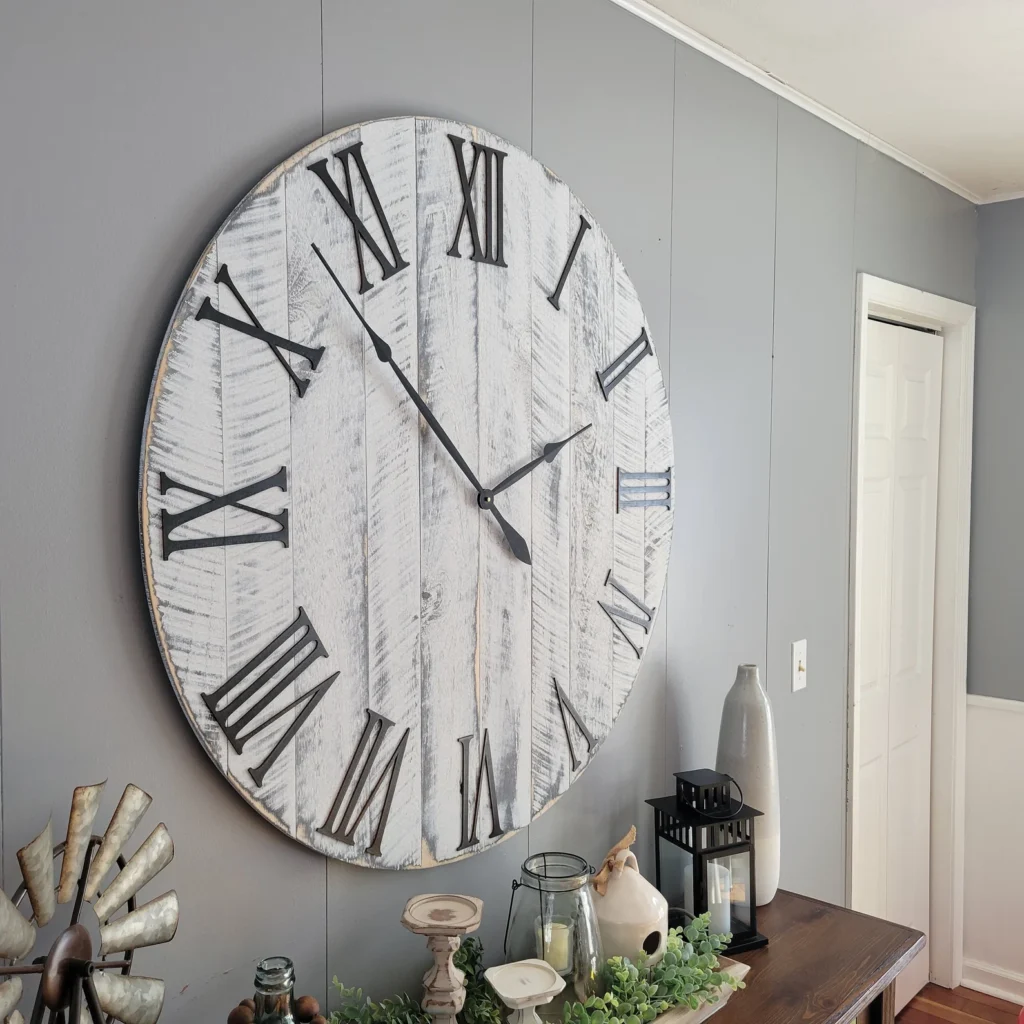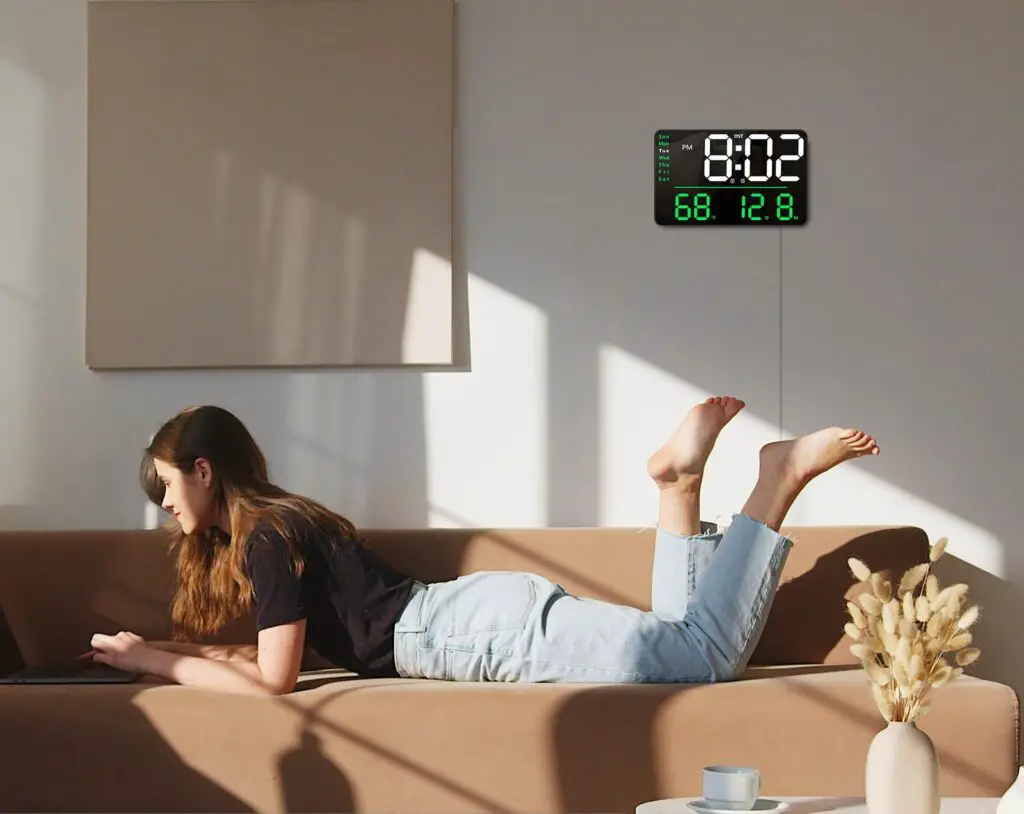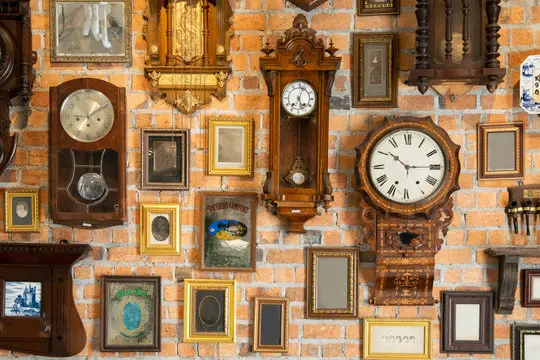Wall clocks are a ubiquitous presence in our everyday lives, appearing on walls in homes, offices, schools, and public spaces. Consequently, they are more than simple instruments measuring passing seconds; they are cultural artefacts that convey human ingenuity, artistry, and our collective relationship with time. This article explores wall clocks’ rich background, distinct types, and the particular rise of large wall clocks, while offering insights into emerging future trends. Moreover, it adheres to British English conventions, enhancing readability through varied sentence openings, transition phrases, and active voice.
HISTORICAL BACKGROUND OF WALL CLOCKS
Early mechanical clocks paved the way for wall-mounted timepieces. For instance, large tower clocks in medieval Europe served to organise community life, signalling the time for prayers in monasteries or work in towns. These monumental clocks, although used since long, by today’s standards, embodied humanity’s first successful attempts at measuring time mechanically. Subsequently, advances such as Christiaan Huygens’ pendulum clock in 1656 allowed for unprecedented accuracy. This breakthrough marked a huge leap forward, as pendulum clocks reduced timekeeping errors drastically.
During the 18th century, spring-driven mechanisms replaced cumbersome weights, making clocks more adaptable and portable. Consequently, wall clocks transitioned from public towers to private homes, becoming centrepieces of décor and status symbols. The 20th century’s quartz revolution further transformed the clock market, enabling accurate, affordable, and widely accessible designs.
VARIETIES AND CHARACTERISTICS OF WALL CLOCKS
Wall clocks fall into several categories, each serving unique needs. Analog clocks remain the classic choice with dials and moving hands, capable of intricate decoration or minimalist beauty. Furthermore, they utilise various mechanisms—wind-up, spring-driven, or battery-powered quartz movements.
Digital clocks have become increasingly prevalent, especially in offices and public areas, where quick numerical readability is crucial. Additionally, hybrids combine analogue aesthetics with digital functionalities, such as wireless syncing or calendar displays.
Large wall clocks constitute a prominent subcategory, valued for visual impact and legibility. Their oversized numerals and broad hands make them perfect for spacious environments, while their elaborate designs elevate them to decorative masterpieces.
THE SIGNIFICANCE OF LARGE WALL CLOCKS
Large wall clocks command attention. For instance, Grand Central Terminal’s opal-faced clock in New York has become a symbolic icon, a centre of orientation and social gathering. Similarly, Prague’s medieval astronomical clock brings a sense of historical wonder to the city’s Old Town Square. These monumental timepieces balance functionality and spectacle, attracting visitors and locals alike.
Additionally, giant clocks in contemporary interior design serve as bold statements. They complement industrial lofts, rustic interiors, or minimalist motifs. Materials such as reclaimed wood, brushed metal, or exposed gears offer eclectic aesthetic choices that marry past and present. Consequently, they are not only practical but also conversation pieces.

CULTURAL AND PRACTICAL IMPACT
Wall clocks embody more than time; they symbolise civilisation’s structure and discipline. In public spaces, they synchronise populations and coordinate activities. Moreover, their cultural presence extends to films, literature, and art, where clocks often signify suspense, fate, or the passage of life.
In homes, wall clocks personalise space and express identity. Through customisation, people transform timepieces into heirlooms or artworks. This dynamic underscores the emotional connection many maintain with these devices, linking functionality to memory and sentiment.
TECHNOLOGICAL INNOVATIONS AND FUTURE TRENDS
Looking forward, wall clocks continue evolving at the intersection of tradition and technology. Emerging trends include smart clocks that sync wirelessly, adapt to weather or time zones, and integrate voice activation via home assistants. Moreover, clocks featuring eco-friendly materials respond to rising sustainability demands.
Some futuristic models project the time onto walls or ceilings, revolutionising how we interact visually with time. Others use hybrid analog-digital displays to satisfy those seeking both nostalgia and modern convenience. Consequently, consumers gain unprecedented personalisation options through digital fabrication, allowing bespoke creations tailored to individual styles.

EXAMPLES OF MODERN LARGE WALL CLOCKS
Today’s market offers a variety of large wall clocks catering to diverse taste profiles. For instance, the Steelside™ Rustic Clock features distressed wood and silent movement, perfect for farmhouse styles. Kelly Clarkson Home’s oversized wooden slat clocks appeal to rustic and vintage enthusiasts. Meanwhile, contemporary options such as Latitude Run®’s 3D acrylic clocks provide modern flair for offices or homes favouring clean lines.
Moreover, exposed gear clocks like the Howard Miller Dakota exemplify industrial elegance as they display moving mechanical components visibly. These designs combined function with artistry, proving large clocks remain centrepieces in modern interior design.
CONCLUSION
In summary, wall clocks span centuries of development—from medieval mechanical wonders to smart, eco-conscious devices fusing technology with timeless design. Large wall clocks, in particular, capture imagination by combining visual impact and practicality. Consequently, their ongoing evolution will keep them relevant in an increasingly digital world.
Ultimately, these devices remain enduring symbols of human order, creativity, and the shared experience of time itself.



